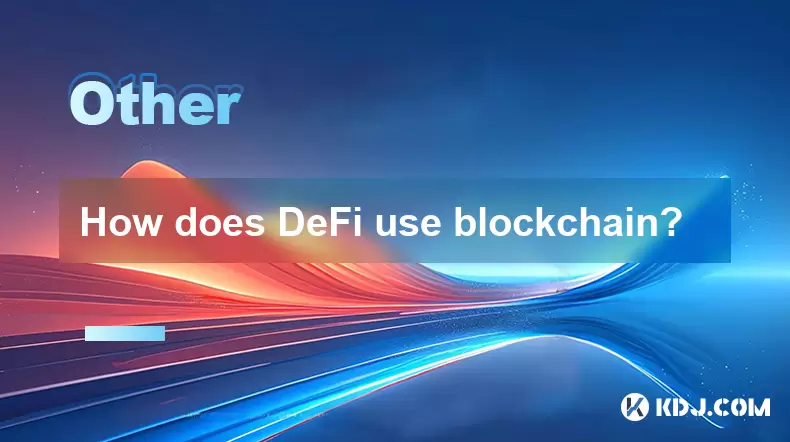-
 Bitcoin
Bitcoin $114000
0.76% -
 Ethereum
Ethereum $3488
0.53% -
 XRP
XRP $2.908
2.27% -
 Tether USDt
Tether USDt $1.000
0.05% -
 BNB
BNB $750.3
0.39% -
 Solana
Solana $161.9
0.14% -
 USDC
USDC $1.000
0.03% -
 TRON
TRON $0.3258
1.22% -
 Dogecoin
Dogecoin $0.1991
1.38% -
 Cardano
Cardano $0.7260
3.39% -
 Hyperliquid
Hyperliquid $38.20
2.33% -
 Stellar
Stellar $0.3987
7.33% -
 Sui
Sui $3.414
1.17% -
 Chainlink
Chainlink $16.28
2.52% -
 Bitcoin Cash
Bitcoin Cash $542.2
2.07% -
 Hedera
Hedera $0.2489
7.51% -
 Ethena USDe
Ethena USDe $1.001
0.05% -
 Avalanche
Avalanche $21.40
0.70% -
 Toncoin
Toncoin $3.635
0.75% -
 Litecoin
Litecoin $109.8
2.04% -
 UNUS SED LEO
UNUS SED LEO $8.955
-0.02% -
 Shiba Inu
Shiba Inu $0.00001221
2.44% -
 Uniswap
Uniswap $9.152
2.20% -
 Polkadot
Polkadot $3.588
2.09% -
 Monero
Monero $298.1
1.27% -
 Dai
Dai $1.000
0.01% -
 Bitget Token
Bitget Token $4.326
1.28% -
 Pepe
Pepe $0.00001045
1.96% -
 Cronos
Cronos $0.1330
4.27% -
 Aave
Aave $257.9
2.12%
How is confidentiality on a blockchain achieved?
Blockchain achieves confidentiality through encryption, zero-knowledge proofs, private transactions, mixing services, off-chain transactions, and decentralized identity management.
Apr 15, 2025 at 08:07 am

How is Confidentiality on a Blockchain Achieved?
Blockchain technology is renowned for its transparency and immutability, but it also offers mechanisms to ensure confidentiality. This article delves into how blockchain achieves confidentiality, exploring various techniques and their applications within the cryptocurrency ecosystem.
Encryption and Cryptography
Encryption is a cornerstone of blockchain confidentiality. It involves converting readable data into a coded format that can only be deciphered with a specific key. In the context of blockchain, cryptography plays a pivotal role in securing transactions and maintaining user privacy.
Public Key Cryptography: This method uses a pair of keys – a public key, which is openly shared, and a private key, which is kept secret. When a user initiates a transaction, it is encrypted with the recipient's public key. Only the recipient, who possesses the corresponding private key, can decrypt and access the transaction details. This ensures that only the intended parties can view the transaction's specifics.
Zero-Knowledge Proofs: This cryptographic technique allows one party to prove to another that a given statement is true without revealing any additional information. In blockchain, zero-knowledge proofs are used to validate transactions without disclosing the transaction amount or the parties involved. Projects like Zcash utilize zero-knowledge proofs to offer enhanced privacy for users.
Private Transactions and Mixing Services
Another approach to achieving confidentiality on a blockchain is through private transactions and mixing services.
Private Transactions: Some blockchains, like Monero, inherently support private transactions. Monero uses ring signatures to obscure the true sender among a group of possible signers, stealth addresses to conceal the recipient, and confidential transactions to hide the amount transferred. These features collectively ensure that transaction details remain confidential.
Mixing Services: Also known as tumblers, mixing services are third-party platforms that pool and mix cryptocurrencies from multiple users before redistributing them. This process breaks the link between the sender and the recipient, enhancing transaction privacy. While mixing services can be used with any cryptocurrency, they are particularly popular with Bitcoin users seeking additional confidentiality.
Off-Chain Transactions
Off-chain transactions offer another layer of confidentiality by processing transactions outside the main blockchain. This method reduces the visibility of transactions to the public while still leveraging blockchain for final settlement.
Sidechains: These are separate blockchains that are pegged to the main blockchain. Transactions can occur on the sidechain, which may have different privacy features, and then be settled on the main blockchain. Liquid Network is an example of a sidechain that offers confidential transactions for Bitcoin.
Layer 2 Solutions: Technologies like the Lightning Network enable off-chain transactions that can be settled on the blockchain later. These transactions are not recorded on the main blockchain until they are finalized, providing a level of privacy during the transaction process.
Regulatory Compliance and Confidentiality
While ensuring confidentiality is crucial, regulatory compliance cannot be overlooked. Blockchain projects must balance privacy with the need to adhere to anti-money laundering (AML) and know-your-customer (KYC) regulations.
Selective Disclosure: Some blockchains implement mechanisms for selective disclosure, where transaction details can be revealed to authorized entities, such as regulators, without compromising overall confidentiality. Corda, a distributed ledger platform, uses such mechanisms to meet regulatory requirements while maintaining privacy for its users.
Privacy Coins and Compliance: Privacy-focused cryptocurrencies like Monero and Zcash often face scrutiny from regulators due to their enhanced confidentiality features. These projects must navigate a complex landscape to ensure they comply with legal standards while offering robust privacy solutions to their users.
Decentralized Identity Management
Decentralized identity management is another facet of blockchain confidentiality. By allowing users to control their own identity data, blockchain can enhance privacy and reduce reliance on centralized entities.
Self-Sovereign Identity (SSI): This concept empowers individuals to own and control their digital identities without intermediaries. Blockchain-based SSI solutions use cryptographic techniques to ensure that personal data remains confidential and can only be accessed with the user's consent. Projects like uPort and Sovrin are pioneering this space.
Verifiable Credentials: These are digital credentials that can be cryptographically verified without revealing the underlying data. Blockchain can be used to issue and manage verifiable credentials, ensuring confidentiality while allowing for the validation of qualifications and identities.
Frequently Asked Questions
1. Can blockchain confidentiality be compromised?
While blockchain technology offers robust confidentiality mechanisms, it is not immune to breaches. Vulnerabilities in smart contracts, flaws in cryptographic algorithms, or attacks on mixing services can potentially compromise confidentiality. Users must stay informed about security best practices and the latest developments in blockchain security.
2. How does blockchain confidentiality impact transaction speed?
Confidentiality features, such as zero-knowledge proofs and ring signatures, can increase the computational complexity of transactions, potentially slowing down processing times. However, advancements in cryptographic techniques and blockchain scalability solutions are continually improving the balance between confidentiality and transaction speed.
3. Are there any trade-offs between confidentiality and transparency on a blockchain?
Yes, there is often a trade-off between confidentiality and transparency. While confidentiality enhances privacy, it can reduce the transparency that is a hallmark of blockchain technology. Projects must carefully design their systems to balance these competing needs, often offering users the ability to choose the level of privacy they desire.
4. How can users verify the confidentiality of a blockchain?
Users can verify the confidentiality of a blockchain by examining its technical specifications and whitepapers. They should look for features like zero-knowledge proofs, ring signatures, and confidential transactions. Additionally, community feedback, audits, and third-party reviews can provide insights into the effectiveness of a blockchain's confidentiality measures.
Disclaimer:info@kdj.com
The information provided is not trading advice. kdj.com does not assume any responsibility for any investments made based on the information provided in this article. Cryptocurrencies are highly volatile and it is highly recommended that you invest with caution after thorough research!
If you believe that the content used on this website infringes your copyright, please contact us immediately (info@kdj.com) and we will delete it promptly.
- XRP: Crypto Analyst's Smartest Buy in 2025?
- 2025-08-04 00:30:13
- SEC, Crypto Regulation, and Digital Assets: A New Era?
- 2025-08-04 00:30:13
- Navigating the Meme Coin Mania: Cold Wallets, SHIB, and DOGE in 2025
- 2025-08-03 22:30:16
- Bitcoin's Price Fall and Scrutiny: What's a New Yorker to Think?
- 2025-08-03 22:30:16
- Shiba Inu's Resistance and Recovery Push: What's Next for SHIB?
- 2025-08-03 22:50:16
- Bitcoin, Hashcash, and Crypto Innovation: A Look at the Foundation and Future
- 2025-08-03 23:12:53
Related knowledge

What is the difference between on-chain and off-chain transactions?
Aug 02,2025 at 04:22pm
Understanding On-Chain TransactionsOn-chain transactions refer to digital asset transfers that are recorded directly on a blockchain ledger. These tra...

What is a node's role in a blockchain network?
Aug 03,2025 at 03:16pm
Understanding the Function of a Node in a Blockchain NetworkA node is a fundamental component of any blockchain network, acting as a participant that ...

How are transactions verified on a blockchain?
Aug 04,2025 at 12:35am
Understanding the Role of Nodes in Transaction VerificationIn a blockchain network, nodes are fundamental components responsible for maintaining the i...

What is the double-spending problem and how does blockchain prevent it?
Aug 02,2025 at 01:07pm
Understanding the Double-Spending ProblemThe double-spending problem is a fundamental challenge in digital currency systems where the same digital tok...

What is the difference between a blockchain and a database?
Aug 01,2025 at 09:36pm
Understanding the Core Structure of a BlockchainA blockchain is a decentralized digital ledger that records data in a series of immutable blocks linke...

How does DeFi use blockchain?
Aug 03,2025 at 11:15pm
Understanding the Role of Blockchain in DeFiDecentralized Finance (DeFi) relies fundamentally on blockchain technology to operate without intermediari...

What is the difference between on-chain and off-chain transactions?
Aug 02,2025 at 04:22pm
Understanding On-Chain TransactionsOn-chain transactions refer to digital asset transfers that are recorded directly on a blockchain ledger. These tra...

What is a node's role in a blockchain network?
Aug 03,2025 at 03:16pm
Understanding the Function of a Node in a Blockchain NetworkA node is a fundamental component of any blockchain network, acting as a participant that ...

How are transactions verified on a blockchain?
Aug 04,2025 at 12:35am
Understanding the Role of Nodes in Transaction VerificationIn a blockchain network, nodes are fundamental components responsible for maintaining the i...

What is the double-spending problem and how does blockchain prevent it?
Aug 02,2025 at 01:07pm
Understanding the Double-Spending ProblemThe double-spending problem is a fundamental challenge in digital currency systems where the same digital tok...

What is the difference between a blockchain and a database?
Aug 01,2025 at 09:36pm
Understanding the Core Structure of a BlockchainA blockchain is a decentralized digital ledger that records data in a series of immutable blocks linke...

How does DeFi use blockchain?
Aug 03,2025 at 11:15pm
Understanding the Role of Blockchain in DeFiDecentralized Finance (DeFi) relies fundamentally on blockchain technology to operate without intermediari...
See all articles

























































































